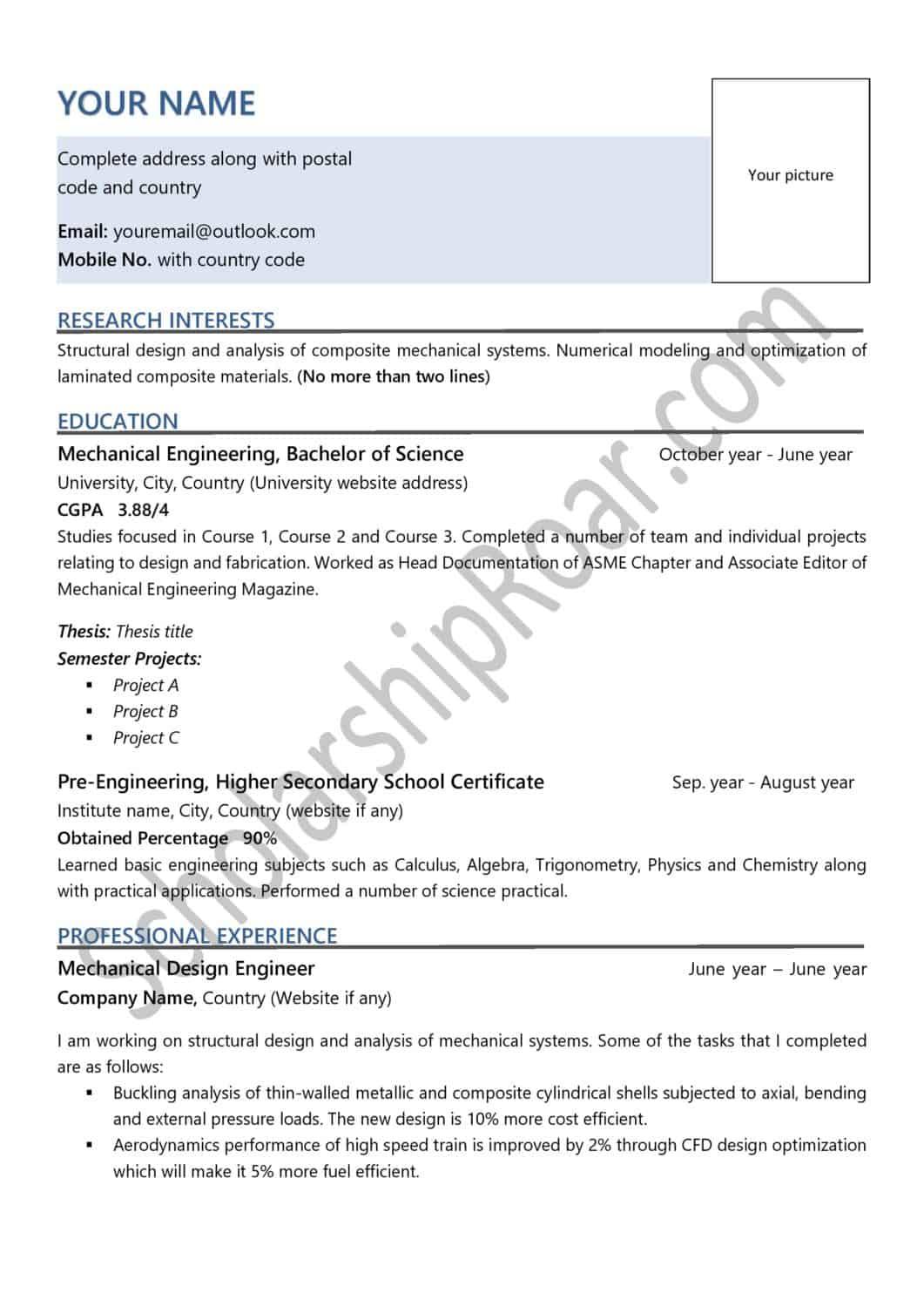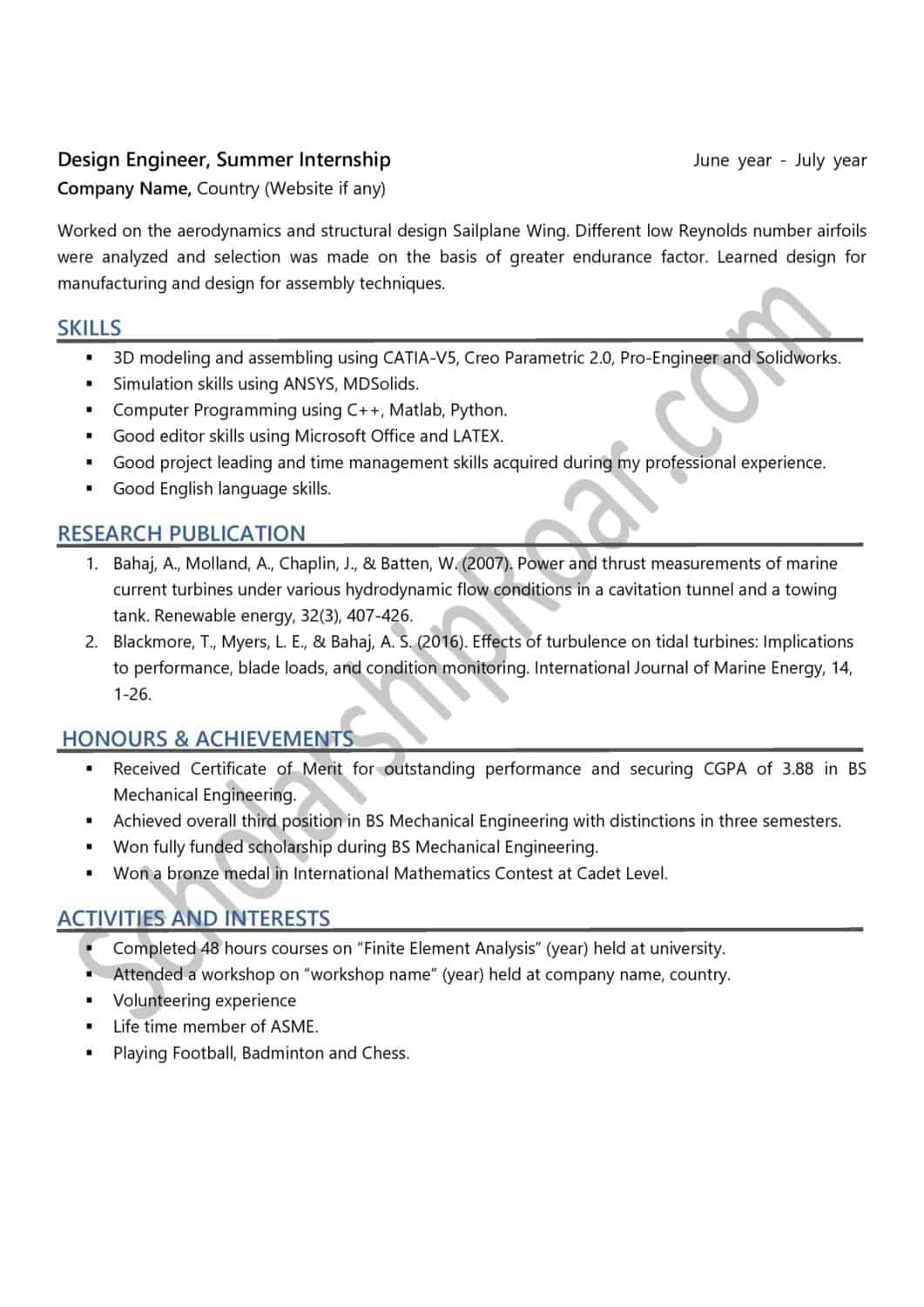
How to Write Academic CV for Scholarship (10 Examples)
When applying for a scholarship, your CV (Curriculum Vitae or Resume) often works as the first evaluation filter in which you seeks to comply with the basic requirements of the call, that your experience is aligned with the program to which you want to apply and that you are a candidate with academic, professional and personal potential.
Academic CV for scholarship should be short and specific. It is recommended to use Times New Roman font and bullets, bold and capital letters to show relevant information to the reader. The information must be in chronological order. Don’t fall a prey to clichés rather portray something unique about yourself.
The role of academic CV is to capture the attention of the scholarship provider so that it continues with the Motivation Letter, which aims to finish convincing him that your candidacy is the most indicated above all others. An ill-planned academic CV may rope in scholarship denial.
This makes the CV one of the most important documents in the evaluation process. We want to tell you some tips based on our experience of winning scholarships and successfully advising other people in their application processes.
Reflect and Brainstorm your Academic CV
Before starting to write your resume, you must make an assessment of yourself and determine the elements of your professional, academic and personal experience which you will place on paper.
Initially you should gather as much information as possible to have a broader view of what you have to offer, and then you should choose which ones to show and how to do it. Remember that the scholarship provider has the final word, so research about him and the profile he seeks . Based on this, select and highlight the most relevant skills and experiences in your Curriculum Vitae (CV).
You can start the research by reading the description of the scholarship and its requirements very well. You can also check the profiles of other fellows studying on that scholarship. Many times the scholarship providers publish articles or institutional videos in which other scholars share their experience and that is your opportunity to analyze their profile.
Follow us on Facebook and get latest scholarship updates.
When you do your research identify key words and write them down in a list, so you know how to address your CV (resume). For example, you will know if you should focus more on the academic, professional or personal skills and experiences. It can also help you for example, to know if you should show more as a researcher, leader, creative or socially aware.
How to Organize Academic CV for Scholarship?
All CVs must have three parts: contact information, education and professional experience. However, I recommend that you add other sections that make it easier for the reader to identify relevant characteristics such as: Certificates and acknowledgments, Volunteering and other experiences, Software Skills and Languages.
Contact:
At the top of the page or in the header you must show your full name and your contact information such as address, phone and email. Avoid placing words such as “CV”, “Curriculum Vitae” or “Resume” which do not make it look professional.
Also Apply for DAAD Scholarship and get a monthly payments of 850 euros for graduates or 1,200 euros for doctoral candidates.
Education:
Normally it goes first because it is what will allow you to show that you meet the basic entry requirements. For example, if you are applying to a PhD , you have already completed a Master’s degree; or if you apply to a master’s degree, you have already completed your undergraduate degree.
Write only the title obtained, the institution, the year of graduation, along with the city and country where you studied. Add special recognition or your qualifications, if they were outstanding.
Work Experience:
Do not limit yourself to describing the tasks that you carried out, but include your achievements and measurable results. With this you are demonstrating to the reader that you leave a trace where you work and that you are aware of the impact of your work. Also write it as the first person, but avoids the use of “I”. Remember that it is about what you have done and, therefore, you are the main character of what you present.
For example, instead of writing “sales and event organization” you better write “I increased sales by 20% over the same period last year and organized events with budgets of more than 500,000 USD.” Always clearly refer to true facts.
Languages:
Show the languages you speak with the respective level: native, basic, intermediate or advanced. Avoid getting entangled with numerical scales that make it difficult for the reader to understand.
Personal Skills:
As you mention your technical skills, also mention your personal skills. This section is vital so that the reader can quickly recognize that you have the profile that interests him. In addition, with this you can also demonstrate self-knowledge and balance.
Also Apply for Chevening Scholarship and get university tuition fees, a monthly living allowance, an economy class return airfare to the UK, and additional grants and allowances
Other Key Sections:
If you have written publications or have been awarded prizes or certificates that complement your formal academic training, you can organize them in a section to highlight your achievements. Also provide links (DOI numbers) to your publications if available. Similarly, if you have experience in extracurricular activities or volunteering , I recommend that you organize them in another section to quickly demonstrate your pro-activity and social awareness.
Do I have to include Professional Profile in Academic CV for Scholarship?
The professional profile is a section with which some people decide to start their CV in the form of presentation. However, it can become a repetition of what you will surely write in your motivation letter. For this reason and also because CV is about being as concise as possible, I would avoid to include it in the CV . But if you want to use it, do not write more than one paragraph or five lines of text.
Do I have to include my picture in Academic CV for Scholarship?
Regarding the photo, it depends a lot on the call, the institution and the country to which you are applying. But in general terms, I recommend you to place a professional photo in your CV which will help the reader to have an idea of who is speaking. The photo should be one in which you appear with a friendly and happy gesture. Avoid forced smiles and serious gestures.
Also Check How to Write a Winning Statement of Purpose for Scholarship
How to write a winning CV for Scholarships?
An ill-planned academic CV may rope in scholarship denial. We have elucidated 8 ways of making your academic CV (resume) sound very effective and powerful.
- Short and specific: Depending on the number of applications, the reader of your CV can spend only 30 seconds to read it. That is why you should try to place all the content in maximum 2 pages.
- Simple format, but NOT flat. Use bullets, bold and capital letters to show relevant information to the reader. It is also recommended that you use more than one column and that you separate the sections clearly to facilitate reading. Avoid unconventional designs and the mix of colors, unless you are applying to an arts program.
- Be specific with the information you submit. Indicates institutions, titles and dates. The information must be in chronological order from the most recent to the oldest.
- Use the correct time. The activities that you are not already doing must be in the past and those that you are still doing in the present. It seems silly but it happens.
- Check the spelling. Whether you write in English, your spelling says a lot about how you communicate and the level of language proficiency. Since self-correcting is not always successful, ask your friends and professors to review each word and phrase.
- Don’t fall a prey to clichés: For example you should not write the sentences like, “If given a chance, I will prove my mettle” or “I am passionate about”. Rather portray something unique about yourself.
- Do not display fancy emails on your Resume: Many of us these days have an email id by the time we were at the age of 12-13. Those days of life were really funny we tried emails with such peppy, funky ids. Many of us retain those funny sounding emails like showerofpetals@gmail.com, tigerforyou@hotmail.com etc. These sound utterly unprofessional. Create an email id that simply states your name. Use that in your resume.
- Let your resume look consistent: Use a common font for all the points mentioned in your resume. Times New Roman size 12 looks decent. Go for this. You may have a slightly bigger font (Say Times New Roman 14) for the subtitles.
Academic CV Samples:
ScholarshipRoar.com has compiled a list of CV samples for scholarship from world top university websites. These includes sample sample CV for master scholarship and sample CV for PhD scholarship. These can also be modified for sample CV for undergraduate scholarship with slight tweaking. We hope this list will help you in writing effective and winning academic CV for scholarship.
- Michigan State University Academic CV Guide and Samples
- Harvard University CV and Cover Letters
- University of Toronto Academic CV Tips and Samples
- The University of Illinois at Urbana-Champaign CV Guide and Samples
- Cornell University Resumes and CVs
- Oxford Academic CV Examples
- PennState College of Earth and Mineral Sciences Academic CV Samples
- Griffith University Australia Academic CV Template
- University of Birmingham CVs for Postgraduate Study
Good News! ScholarshipRoar.com is sharing with you the best academic CV example. I hope this will help you greatly in preparing your scholarship application.


Now its your turn!
We are sure these tips and resources will certainly help you chisel a perfect academic CV for scholarship. Remember that a CV is invaluable and will make or break your chances of winning a scholarship. Spend sometime pondering over the points discussed in the article and come up with a brilliant CV.
Subscribe to our YouTube channel for step by step Application process
Wishing you Success!!
You must check these great scholarships:
- Chinese Government Scholarship | A Complete Guide and Step by Step Application Procedure
- 44000$ Yale University Scholarships USA
- Humber International Entrance Scholarships Canada
- Fulbright Foreign Student Program USA
- DAAD Scholarships for Masters and PhD Germany
Link nội dung: https://cdsphagiang.edu.vn/index.php/cv-scholarship-a38140.html